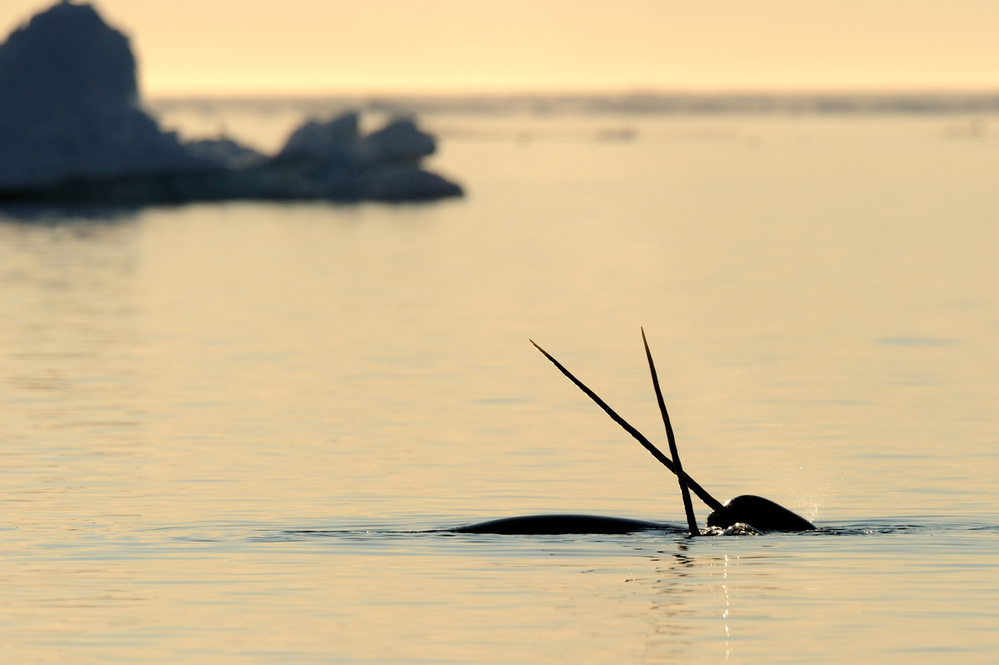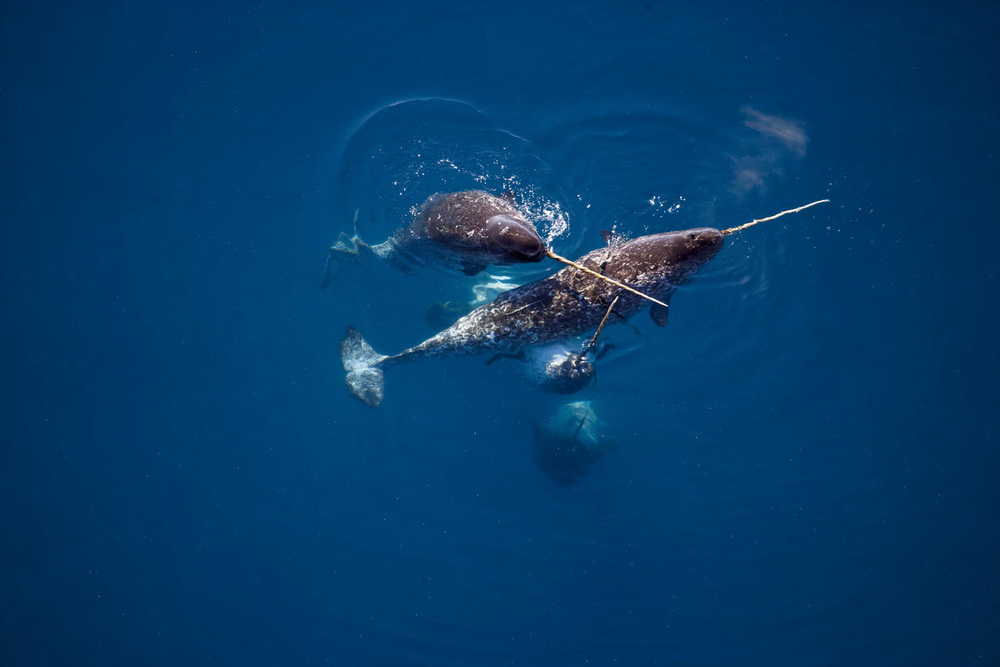© naturepl.com / Doug Allan / WWF
Features
Why a louder Arctic is especially problematic for narwhal
- Narwhal
- Pan-Arctic
- Shipping
- Underwater noise
Narwhal are one of the marine mammals most sensitive to underwater noise, and recent research further emphasizes that. The two studies found that narwhal show signs of stress in response to underwater noise. These findings are important for both narwhal conservation and for Arctic marine planning.
We already know that underwater noise is highly disruptive to marine mammals in the pristine Arctic Ocean soundscape. Whales use sound to navigate the Arctic waters.
While the breaking up of sea-ice, calving of glaciers, and breakdown of icebergs all cause sounds that are familiar, it is the unfamiliar human activities like shipping, seismic exploration, pile driving, ice breaking, and sonar activities that cause underwater noise and disturb whales.
Like other whales, narwhal use sound to see, hear, communicate, navigate, and assess their surroundings. They are greatly impacted when unfamiliar noise enters their habitat.
Two recent studies, one from Mads Peter Heide-Jørgensen and colleagues published in Frontiers in Marine Science and another from Outi M. Tervo and colleagues published in Biology Letters, found that narwhal showed signs of stress when exposed to ship traffic and seismic airguns, which mimic seismic surveys being done in the Arctic to search for oil and gas.
© naturepl.com / Doug Allan / WWF
Underwater noise triggered stress
More specifically, the study by Heide-Jørgensen and colleagues found that narwhal display avoidance reactions when exposed to both small and large seismic airguns by swimming away from the sound and towards the shore; a behaviour that narwhal display when a killer whale, one of their predators, is detected. The scientists also found that narwhal increase their speed of swimming when the air gun is fired, as well as when narwhal detect ship traffic.
Similarly, Trevo and colleagues’ study found underwater noise to affect feeding behaviour of narwhal. Narwhal first decreased then eliminated their buzzing rate (fast clicking sounds made when searching for food) when ships or the airgun could be detected. At 12 km from a noisy ship, narwhals buzzed half as much, and stopped buzzing altogether when the ship was 6-7 km away.

© naturepl.com / Eric Baccega / WWF
Furthermore, the study found that even at 40 km away, when underwater noise from ships and the airgun was quieter than the ocean’s natural sound levels, narwhal were still able to detect the foreign noise and reduced their buzzing behaviour in response.
These findings place narwhal at the top of the list, together with beaked whales and harbour porpoise, as the most sensitive species of whales and dolphins to human-made noise. Continual disruption of narwhal during feeding by underwater noise could easily affect their body fat reserves, reproduction and even survival.
For the narwhal’s future
Narwhal are creatures of habit and tend to return to the same locations year-after-year. They are also known to have limited flexibility in their patterns, well-defined migratory rates, and are thought to be more naive to human-made noises compared to some of their other whale cousins.
These and other studies are improving our understanding of responses by Arctic whales to underwater noise from shipping – a major source of noise pollution in the world’s oceans. Narwhal and other Arctic species are under immense pressure from the climate crisis and we must take a precautionary approach to management of other impacts to give them the best chance of adapting.
Dr. Melanie Lancaster, species lead WWF Arctic Programme
Both studies also highlight that more research is needed to understand the consequences that increased and sustained underwater noise will have narwhal, at both the individual and population levels.
But what we do know for sure is that underwater noise introduced to the Arctic soundscape harms narwhal and other wildlife. Ship traffic and marine planning must consider these sound-sensitive mammals in Arctic waters.

© Paul Nicklen / National Geographic Creative / WWF-Canada
By WWF Global Arctic Programme